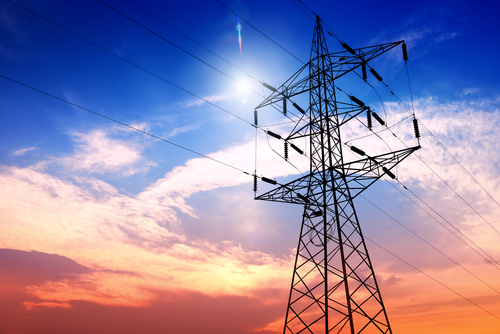During heat waves, many homes, offices, and other buildings typically blast their air conditioning in order to stay cool. However, this increased energy demand can put added stress on the power grid and lead to brownouts or blackouts. In order to help provide relief to the grid (and save money), facilities managers should take steps to reduce their facilities’ energy demand where possible.

Brownouts and Blackouts
According to Harvard University, increased demand for power means that the power grid system is forced to utilize less efficient power plants to purchase power. If electricity demand outweighs the amount of power available, brownouts can result. These brownouts are a drop in voltage in an electrical supply system. While these reductions only last for minutes or hours, sensitive electronic equipment, like computers, can be permanently damaged.
Brownouts are meant to prevent the system from failing completely, as it does in a blackout. Electrical companies can impose rolling blackouts where power is shut off to certain areas. While this might only result in losing power for hours, a completely overwhelmed power grid could mean a total blackout. This would cause a loss of power for days or even weeks.
Both brownouts and blackouts can cause businesses to have an economic loss, spoilage for those that rely on refrigeration, and health and safety issues.
Facilities managers should help their communities by reducing energy demand during increased energy demand periods, such as heat waves. They should additionally consider participating in a demand response program. This program allows electric utility companies to communicate to users when there is high demand and ask them to conserve energy; in exchange, users receive an incentive for lowering their energy use. To learn more read “Demand Response (DR): Reduce Costs; Stay Productive” on Facilities Management Advisor.
Here are six ways that facilities managers can help save energy:
- Thermostat: When possible, turn up the thermostat setting for central air or air conditioning by several degrees.
- Electronics: Shut down all computers, monitors, copiers, and printers when they are not being used. Unplug laptops from electrical power and use their batteries.
- Non-essential lights: Turn off all non-essential lights and use energy-efficient task lighting.
- Motion-detecting lights: Install motion-detection lighting for hallways and common areas.
- Invest in clean energy: Buy green energy or have self-generating power with on-site projects. To learn more, check out “Earth Day: Five Ways to Make Your Facilities More Sustainable” on Facilities Management Advisor.
- ENERGY STAR: Purchase efficient ENERGY STAR products. For more information, check out “Back to Basics: How Businesses Can Participate in the ENERGY STAR Program” on Facilities Management Advisor.
Strengthening the Grid
As facility professionals take steps to reduce energy during high-demand energy times, they can be assured that the federal government is working to strengthen the power grid. In a July 2022 press release, the U.S. Department of Energy announced $2.3 billion is being spent to strengthen and modernize America’s power grid. Here are some of those steps:
- Utility pole upkeep and removal of trees and other vegetation affecting grid performance
- Undergrounding electrical equipment
- Relocating or reconductoring powerlines
- Making the grid more resistant to extreme weather
- Increasing fire-resistant components
- Utilizing monitoring, controls, and advanced modeling for real-time situational awareness
- Integrating energy resources like microgrids and energy storage
Facilities managers and company leaders should work hard to find ways to conserve energy during heat waves when there is high energy demand on the electric grid.
